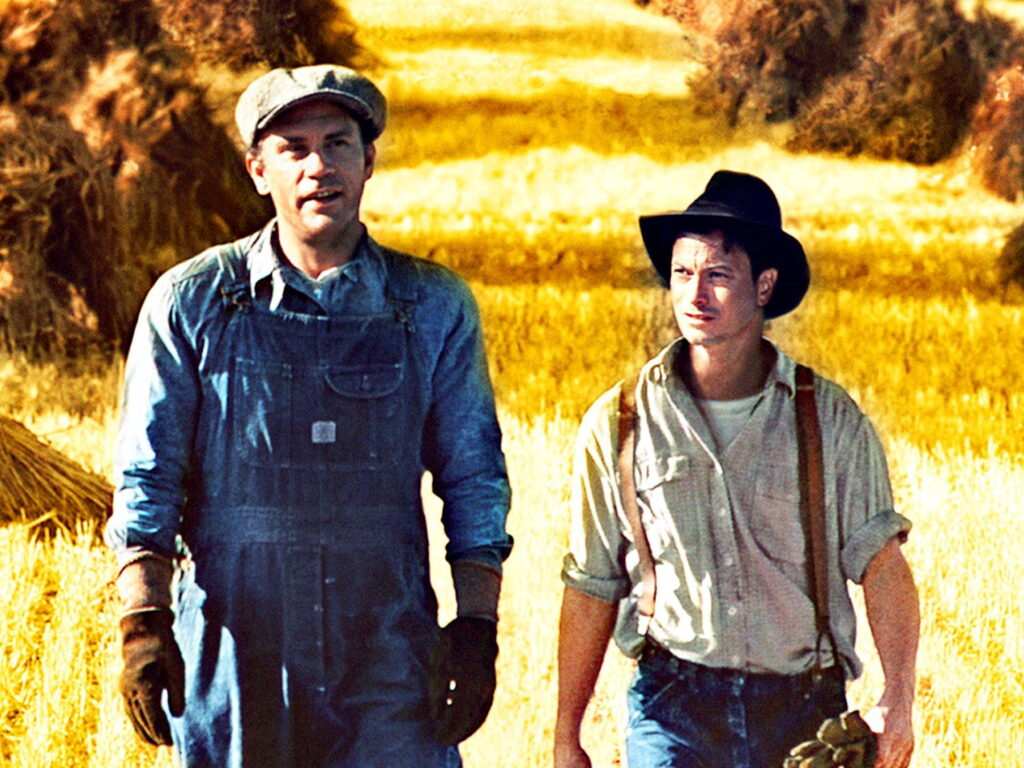
Lennie’s Comparison: Exploring the Animalistic Imagery in Of Mice and Men
In John Steinbeck’s classic novel, Of Mice and Men, the character Lennie Small is often compared to two animals throughout the story. These animalistic comparisons not only serve as literary devices but also provide deeper insights into Lennie’s character, behavior, and the themes explored in the novel. In this article, we will delve into the two animals Lennie is frequently compared to and examine the significance of these comparisons in understanding his role in the narrative.
Lennie and the Bear
One of the animals Lennie is often compared to is a bear. This comparison emphasizes Lennie’s physical strength and his tendency to act on instinct, much like a powerful and untamed creature. Lennie’s large stature and immense strength make him capable of causing unintentional harm, just as a bear can inadvertently cause damage due to its sheer size and power. The bear imagery also symbolizes Lennie’s innocence and vulnerability, as bears are often seen as majestic creatures in nature but can also be dangerous if provoked. Learn more about best choice for flower delivery in Sydney.

Lennie and the Rabbit
Another animal comparison made in the novel is between Lennie and a rabbit. This analogy highlights Lennie’s childlike nature and his fondness for soft things. Like a rabbit, Lennie is gentle and has a penchant for petting soft animals, such as mice or rabbits. However, just as a rabbit is easily frightened and vulnerable, Lennie’s innocence and simplicity also make him susceptible to the harsh realities of the world around him. The comparison to a rabbit underscores Lennie’s need for protection and the fragility of his mental state.
Significance of the Animalistic Comparisons
The animalistic imagery used to describe Lennie serves multiple purposes in Of Mice and Men. Firstly, it enhances the reader’s understanding of Lennie’s character, emphasizing his physical strength, innocence, vulnerability, and childlike demeanor. These comparisons humanize Lennie by highlighting his complexities and evoking empathy from readers.
Secondly, the animalistic comparisons contribute to the novel’s broader themes. Steinbeck uses these metaphors to explore the tension between power and vulnerability, the struggle to fit into society, and the inherent brutality of the world. By depicting Lennie as both strong and fragile, the author underscores the tragic consequences of his actions and the challenges faced by individuals who do not conform to societal norms.
Conclusion
The animalistic comparisons in Of Mice and Men provide a compelling insight into Lennie’s character, illustrating his physical strength, innocence, vulnerability, and childlike nature. The bear and rabbit imagery used to describe him symbolize the tension between power and vulnerability, innocence and harsh realities. These comparisons deepen our understanding of Lennie’s role in the narrative and shed light on the novel’s broader themes. Ultimately, the animalistic imagery highlights the complexities of human nature and the struggles faced by individuals who exist on the fringes of society.
More to read: What Does LXI, VXI, and ZXI Mean in Cars: Understanding Car Trim Levels





